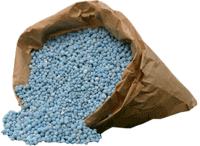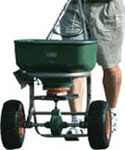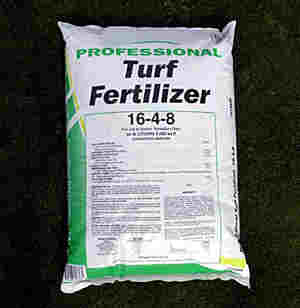In Northwest Florida, all of our lawn grasses begin to fade and slowdown in growth during fall.They are supposed to go dormant. Some will go dormant earlier than others based on species, location and management.
The grasses we use to create lawns are warm season grasses such as centipedegrass, St. augustinegrass, bahiagrass, bermudagrass and zoysiagrass.
The cooler temperatures (particularly cooler night temperatures) and the shorter days of autumn trigger these grasses to slow down. Their color begins to fade and eventually they turn brown, usually after a frost or freeze.
As these warm season grasses go dormant, they don’t need to be fertilized, particularly with a high nitrogen fertilizer. Some of the so called “winterizer” fertilizers available in our area can cause more damage than good despite the advertisements.
Nitrogen encourages new growth and interferes with the dormancy process, forcing the lawn to produce new tender growth at the wrong time of year. This sets the lawn up for damage. That young tender growth is very susceptible to cold injury and is likely to be damaged by the first frost. This greatly weakens the lawn and many times the damage goes unnoticed until the following spring when sections of the lawn do not green up. If you insist on “winterizing” your lawn, use a fertilizer with low nitrogen (represented by the first number in the fertilizer analysis) and high potassium (represented by the last number in the analysis). In most cases the center number (phosphorus) should also be low. But never use a high nitrogen fertilizer late in the season.
Large patch disease is another reason to avoid fertilizing after September, particularly with a high nitrogen fertilizer. Too much nitrogen at the wrong time promotes a common lawn disease called large patch, formerly known as brown patch. This disease is caused by the fungus Rhizoctonia. Large patch functions as a pathogen in our lawns during the cooler weather of fall and spring. Applying a high nitrogen fertilizer when large patch is active can be like applying gasoline to a fire, allowing this lawn disease to rage out of control.
In order for the fertilizer to do any good at all for the lawn, it needs to be applied while the grass is actively growing, when the grass can readily take it in. After the lawn is dormant and when the soil temperature is cooler, much of the fertilizer that could have benefited the grass is wasted.
- Evaluate and Renovate Landscape During Fall - October 30, 2025
- Summer is Too Hot for Lawn Herbicides - August 23, 2025
- Nuisance Gnats abound in Northwest Florida this spring - June 26, 2025



